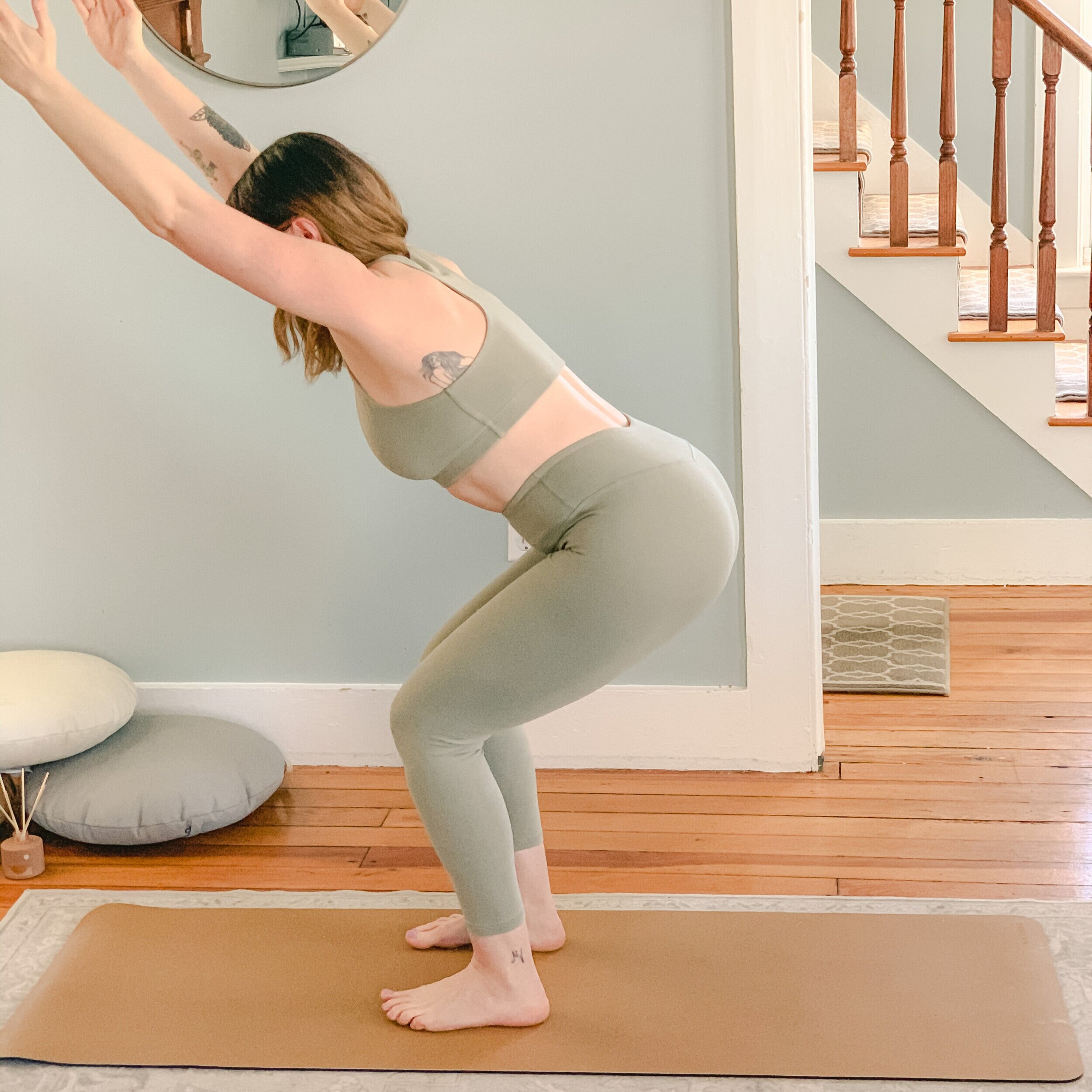Although there are currently many treatments for depression and anxiety disorders available, including psychotherapy and medication, many people continue to suffer from harmful symptoms as well as relapse. Yoga can be an effective supplemental treatment in addition to antidepressants and therapy because of yoga’s different beneficial limbs. Specifically, asana (postures and movement), pranayama (breathing techniques), and dhyana (contemplation or meditation) tend to be the most helpful of the eight limbs. All three of these steps in a yoga practice can be used to cope with depression and anxiety symptoms in different ways.
Both depression and anxiety manifest themselves physically, and the practice of yoga’s asanas, or poses, can alleviate some of these physical symptoms. An anxious person would benefit from calming poses like balasana (child’s pose) or an inversion like sarvangasana (shoulder stand) where the brain is flooded by freshly oxygenated blood, refreshing and calming the brain. Someone who is depressed might curl in on him/herself and have hunched shoulders. Heart opening postures like backbends or shoulder openers like adho mukha svanasana (downward-facing dog) can counteract this curve in the neck and back. The physical contact from a teacher’s adjustments can also be very comforting to a depressed person. A good teacher can read their student’s body language to assess what he or she may need.
Everyone’s yoga practice is personal. Each pose called out by a teacher is just a suggestion. No one is made to do anything, and there are modifications for every posture to accommodate various physical abilities. There is a focus on reaching your own fullest expression of each pose, your own potential. There is nothing to cure or “fix” as there might be in other forms of treatment. This approach can be empowering to those who feel helpless or broken.
Imaging studies have shown that yoga can increase dopamine release in the reward system of the brain, as well as an increase in plasma serotonin, melatonin, and gamma-aminobutyric-acid levels. It is thought that these transmitters can promote positive emotions and a feeling of wellbeing, while also decreasing negative emotions. Yoga can also decrease levels of cortisol, which triggers the brain’s stress response.
From a fitness perspective, yoga can also decrease depression because it shifts a patient’s focus to physical sensation. Practitioners of certain types of yoga may lose weight and show an increase in overall physical health, and that, too, alleviates some depression. Yoga can relieve low back pain that is often associated with depression, and it also improves sleep. Practicing in a studio that has a focus on its community fosters a feeling of connectedness and helps to motivate students, as well. However, the practice of yoga is not purely exercise or gymnastics because there is a meditative focus on the breath.
Many of us in western society are never taught how to breathe. It’s simply something our body does to keep us alive, and we’re rarely conscious of it. However, pranayama, or breath exercises, can help us gain control over otherwise overwhelming emotions. There are different purposes behind each type of pranayama. For example, slowing the breath lowers the heart rate, which can calm the parasympathetic nervous system and lower blood pressure in those experiencing anxiety. Whereas as Kapalbhati breath, where one pumps the abdominal muscles, is energizing and invigorating for someone who is depressed. Focusing on the breath instead of ruminating on negative thoughts is another way to reduce depression symptoms.
Meditation is becoming an increasingly accepted practice in the U.S. While it may have previously been dismissed as “new-agey”, medical professionals are now turning to mindfulness-based stress reduction as an intervention for depression. Mindfulness is especially helpful in preventing relapse. An awareness of one’s own thought process is crucial when attempting to avoid self-harmful habits. Guided meditation practices that prompt participants to visualize themselves in peaceful, positive situations or that simply offer an alternate perspective on any given situation can be extremely helpful to those experiencing a feeling of hopelessness. Further, mindfulness eventually motivates patients to participate in other meaningful and enjoyable activities.
In yoga there is a focus on non-judging and non-grasping and being content with what you have. This notion of self-care is known as santosa. A large part of meditation in yoga is trying to see the truest version of oneself. Someone with anxiety may be experiencing unrealistic spiraling thoughts, and viewing him/herself as an objective observer can help reality to sink in once more.
Mindfulness skills have been proven to inhibit or ease symptoms of depression. A study conducted at Brown University in 2010 found that its participants reported significant decreases in symptoms of depression while also exhibiting significant increases in mindfulness after two months practicing vinyasa yoga. The majority of their participants wanted to continue to practice yoga after the study was completed.
There are several different aspects of yoga that can help to treat anxiety and depression. The physical activity, breathing exercises, and awareness practiced are especially beneficial. Whether it be through yoga or not, physical health and self study are necessary to combat mental diseases and disorders that affect so many people in the United States. Why not cultivate this mind-body connection through a fun yoga practice in a safe, nonjudgmental environment?







